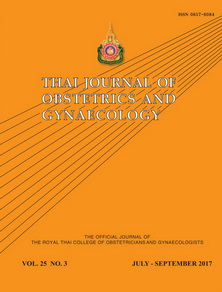Depression: The Silent Crisis during Pregnancy
Main Article Content
Abstract
Depression is a major problem that is more prevalent in women than in men especially during childbearing years. A woman’s postpartum period is associated with both physical and hormonal changes, leading to emotional disturbances. These disturbances are characterized as postpartum blues, postpartum depression, and postpartum psychosis, with postpartum blues and postpartum depression being more common than postpartum psychosis. Such untreated postpartum psychiatric illnesses can lead to long-term effects in both mother and child, particularly effecting the child’s development. Appropriate screening, early diagnosis, identification of risk factors and timely treatment of these postpartum illnesses is essential for both mother and child, with a prompt response improving the outcome.
Article Details
References
2. Sundstrom Poromaa I, Comasco E, Georgakis MK, Skalkidou A. Sex differences in depression during pregnancy and the postpartum period. J Neurosci Res 2017;95:719-30.
3. Kendig S, Keats JP, Hoffman MC, Kay LB, Miller ES, Moore Simas TA, et al. Consensus Bundle on Maternal Mental Health: Perinatal Depression and Anxiety. Obstet Gynecol 2017;129:422-30.
4. Committee on Obstetric P. The American College of Obstetricians and Gynecologists Committee Opinion no. 630. Screening for perinatal depression. Obstet Gynecol 2015;125:1268-71.
5. Dutta DC, Konar H. DC Dutta’s textbook of obstetrics : including perinatology and contraception. New Delhi: Jaypee, The Health Sciences Publisher 2015.
6. Field T. Prenatal depression effects on early development: a review. Infant Behav Dev 2011;34:1-14.
7. Fontein-Kuipers YJ, Nieuwenhuijze MJ, Ausems M, Bude L, de Vries R. Antenatal interventions to reduce maternal distress: a systematic review and meta-analysis of randomised trials. BJOG 2014;121:389-97.
8. Gavin NI, Gaynes BN, Lohr KN, Meltzer-Brody S, Gartlehner G, Swinson T. Perinatal depression: a systematic review of prevalence and incidence. Obstet Gynecol 2005;106:1071-83.
9. Cunningham FG. Williams obstetrics. 24th edition. ed. New York: McGraw-Hill Medical 2014.
10. Wisner KL, Parry BL, Piontek CM. Clinical practice. Postpartum depression. N Engl J Med 2002;347:194-9.
11. Pitanupong J, Liabsuetrakul T, Vittayanont A. Validation of the Thai Edinburgh Postnatal Depression Scale for screening postpartum depression. Psychiatry Res 2007;149:253-9.
12. Alvarado-Esquivel C, Sifuentes-Alvarez A, Salas-Martinez C. Detection of Mental Disorders Other Than Depression with the Edinburgh Postnatal Depression Scale in a Sample of Pregnant Women in Northern Mexico. Ment Illn 2016;8:6021.
13. Bhusal BR, Bhandari N, Chapagai M, Gavidia T. Validating the Edinburgh Postnatal Depression Scale as a screening tool for postpartum depression in Kathmandu, Nepal. Int J Ment Health Syst 2016;10:71.
14. Chorwe-Sungani G, Chipps J. A systematic review of screening instruments for depression for use in antenatal services in low resource settings. BMC Psychiatry 2017;17:112.
15. American Psychiatric Association. DSM-5 Task Force. Diagnostic and statistical manual of mental disorders : DSM-5. 5th ed. Washington, D.C.: American Psychiatric Association 2013.
16. Sockol LE, Epperson CN, Barber JP. A meta-analysis of treatments for perinatal depression. Clin Psychol Rev 2011;31:839-49.
17. Stuart-Parrigon K, Stuart S. Perinatal depression: an update and overview. Curr Psychiatry Rep 2014;16:468.
18. Sadock BJ, Sadock VA, Ruiz P. Kaplan & Sadock’s synopsis of psychiatry : behavioral sciences/clinical psychiatry. Eleventh edition. Philadelphia: Wolters Kluwer 2015.
19. Austin MP, Kildea S, Sullivan E. Maternal mortality and psychiatric morbidity in the perinatal period: challenges and opportunities for prevention in the Australian setting. Med J Aust 2007;186:364-7.

